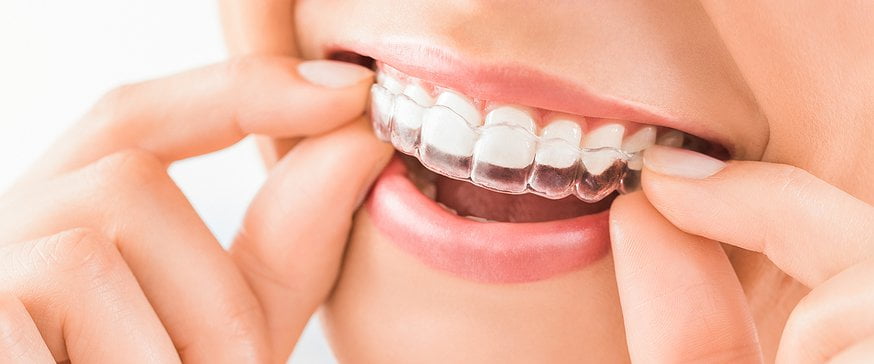Legacy Orthodontics - The Facts
Table of ContentsExcitement About Legacy OrthodonticsAbout Legacy OrthodonticsLegacy Orthodontics for Beginners5 Simple Techniques For Legacy OrthodonticsThe Ultimate Guide To Legacy Orthodontics
In enhancement, we provide flexible treatment timetables, versatile settlement choices and an enjoyable, satisfying experience.An orthodontist is a dentist educated to diagnose, prevent, and treat teeth and jaw abnormalities. They correct existing conditions and are trained to determine problems that may develop in the future. Orthodontists collaborate with people of all ages, from children to grownups. People frequently connect a best smile with health.
Malocclusion, or misaligned teeth, can cause dental concerns, including dental caries, gum condition, and hard or painful eating. Yet not every person is born with straight teeth. If you have a bad bite or large rooms between your teeth, you might intend to get in touch with a dentist specializing in orthodontic care.
The Ultimate Guide To Legacy Orthodontics
( Picture Credit Rating: DigitalVision/Getty Images) Orthodontists utilize taken care of and detachable dental gadgets, like dental braces, retainers, and bands, to transform the placement of teeth in your mouth. Orthodontic therapy is for dental irregularities, including: Uneven teethBite problems, like an overbite or an underbiteCrowded teeth or teeth that are too much apartJaw misalignmentThe goal of orthodontic therapy is to boost your bite.
A healthy bite ensures you can eat, eat, and speak appropriately. While you may think about orthodontists as mainly for children or teens who require dental braces, they can fix dental problems at any age. Orthodontists go to university, dental institution, and orthodontic school. After college graduation, they spend 2 or 3 years in an orthodontic residency program.
, however not all dentists are orthodontists. They concentrate on 2 areas: Exactly how to properly and securely relocate teeth Exactly how to correctly assist advancement in the teeth, jaw, and faceOnce an orthodontist has actually finished training, they have the choice to come to be board licensed.
Legacy Orthodontics for Beginners
Malocclusion leads to tooth congestion, a misshapen jaw, or irregular bite patterns. Malocclusion is typically treated with: Your orthodontist attaches steel, ceramic, or plastic square bonds to your teeth.
Some people need a headgear to help move teeth right into line with pressure from outside the mouth. A retainer is a personalized gadget that keeps your teeth in place.
They're usually used on children. They can develop additional area in the mouth without needing to pull teeth. If you have a major underbite or overbite, you could require orthognathic surgical procedure (also called orthodontic surgical treatment) to lengthen or shorten your jaw. Orthodontists make use of cords, medical screws, or plates to sustain your jaw bone.
You might require to see an orthodontist if you have: Crowding or not enough room for every one of your teethOverbite, when your upper teeth come by your bottom teethUnderbite, when your bottom teeth are too far forwardSpacing or concerns with gapsCrossbite, which is when your upper teeth fit behind your bottom teeth when your mouth is closedOpen bite or a vertical space in between your front bottom and upper teethMisplaced midline, when the center of your bottom and top teeth don't line up Correcting an oral malocclusion can: Make biting, chewing, and talking easierImprove the proportion of our face and your overall appearanceEase discomfort from temporomandibular joint problemsDifferent your teeth and make them easier to clean, aiding stop dental caries or tooth cavities It's often a dental expert who initially notices misaligned teeth throughout a routine examination.
Rumored Buzz on Legacy Orthodontics

During your first orthodontic consultation, you'll likely have: An oral examPhotos taken of your face and smileDental X-raysPanoramic (360 level) X-rays of your face and headImpressions to produce molds of your teethThese tests will certainly aid your orthodontist Clicking Here recognize how to wage your therapy. clear braces. An orthodontist is a dental expert that's had training to treat your teeth and jaw
An orthodontist is concentrated on your bite, so something like a cracked tooth would certainly be taken care of by a dental professional. Orthodontists are concentrated on your bite, or the means your teeth fit together, and the straightness of your teeth.
Ever questioned how stars always appear to have flawlessly straightened teeth? Orthodontists are oral professionals who focus on fixing abnormalities in the teeth and jaws.
The Greatest Guide To Legacy Orthodontics

While braces are one of the most commonly recognized orthodontic treatment, orthodontists have a diverse toolkit at their disposal. The details approach selected depends upon the intensity of the situation, the client's age, and individual preferences. These tried-and-true braces use a system of braces bonded to the teeth and linked by wires.
Clear aligners, like Invisalign, are a prominent option for clients looking for a more very discreet treatment alternative. These detachable trays are customized to progressively shift the teeth's setting. Headwear may be made use of in conjunction with dental braces or aligners to use added targeted forces, specifically for remedying jaw disparities. In instances of narrow jaws, palatal expanders can be made use of to create room for correct tooth alignment.